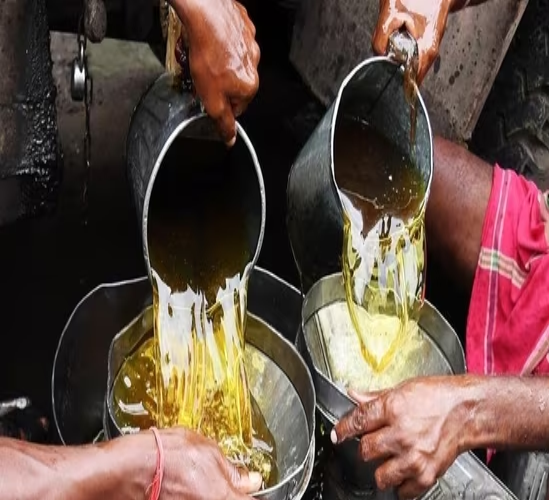India’s edible oil security at a crossroads

With less than two months remaining in the current oil year, India has already achieved a record-breaking import of 139.7 lakh tonnes in just 10 months, approaching the total import for the entire 2021-22 oil year of 140 lakh tonnes. The total import figure for the full year is anticipated to surpass this significantly.
More than half of India’s domestic demand for edible oil is met through imports with it being the largest importer of palm, soyabean and sunflower oil in the world. Of all the imported edible oils, share of palm oil is about 57%, followed by soybean oil with a share of 29% and sunflower (14%). India majorly imports palm oil from Indonesia and Malaysia, whereas the bulk of soybean oil is sourced from Argentina and Brazil. India imports sunflower oil (crude) mainly from Russia and Ukraine, with Romania and Netherlands emerging as a new partner in the current oil year.
India imported $ 3 billion worth of crude soyabean oil from Argentina, amounting to 52% of India’s total imports of the product during 2022-23. Argentina’s crushing industry is one of the world’s largest with yearly raw soybeans processing capacity of 38 to 40 million MT. As a result of drought, Argentina is facing severe crop crunch with soya crop production down by approximately 43% in 2022-23. Further, the United States (US) being among the largest exporters of soyabean oil (crude) has also shown warning signals with the US department of agriculture crop progress report of October 2023 showing 51% of soybeans in good-to-excellent conditions, down by six percentage points year-on-year. However, the actual soybeans production of the USA in 2023-24 will likely be decided by the weather conditions in coming months which could possibly impact the prices of soyabean oil in the international market.
During 2022-23, due to logistic and regulatory barriers with Ukraine, India’s import of sunflower oil (HS 15121110) reduced by 71% from the previous year. As a market diversification measure, India increased its import for the same product by massive 188% from Argentina to fulfil its import demand. Thailand has also emerged as new source market for India for palm oil (HS 15111000) whose imports have doubled during the same period. Further, Indian Government as a pre-emptive measure to control edible oil inflation, reduced the Basic Import Duty on Refined Soyabean Oil (HS Code 15079010) and Refined Sunflower Oil (HS Code 15121910) from 17.5% to 12.5% in June. Nepal is the major exporter of these products to India. This duty reduction further contributed towards the bumper rise in imports of edible oil in July and August.
These heavy imports are hindering the development of domestic capabilities in the sector. To mention, the total refined oils (RBD Palmolein) have surged to 19.2 lakh tonnes during November 2022 to August 2023, a significant increase from the 4.2 lakh tonnes reported during the corresponding period in 2019-20, which is directly impacting the operations of the domestic palm oil refining industry.
The concentration risk involved due to India’s limited diversification of its edible oil source market can potentially jeopardizes the nation’s edible oil security given the widespread use of edible oil in Indian households. In the rapidly evolving global landscape of geo-economic fragmentation, India could find itself vulnerable to the dynamics of these import markets for its edible oil requirements. Further, the uncertain weather pattern due to El Nino, could lead to lower production estimates for oil seeds domestically.
To ensure a stable and secure edible oil supply, considering the staggering deficiency and the cost to the exchequer on account of imports, on one hand, the Government of India has initiated the National Mission on Edible Oils – Oil Palm (NMEO-OP). The objective is to boost the production of edible oilseeds and increase the availability of oils within the nation by expanding oil palm cultivation, elevating crude palm oil production, and alleviating the dependency on imported edible oils. The primary focus of the mission is on augmenting edible oil production from oil palm. On the other hand, India must now also prioritize the development of a resilient supply chain, leveraging its Free Trade Agreement (FTA) partnerships within the Association of South East Asian Nations (Asean), specifically with Indonesia, Malaysia, and Thailand, as these countries are major exporters of palm oil. By tapping into these established trade ties, India can address its edible oil needs.
However, for a sustainable long-term solution, the country can actively promote and support domestic production capabilities in the edible oil sector. This entails investing in research, technology, and agricultural practices to enhance local oilseed cultivation and oil extraction methods. A comprehensive approach will only enable India to mitigate risks associated with external supply chain disruptions and achieve self-sufficiency in meeting its edible oil demands.
















